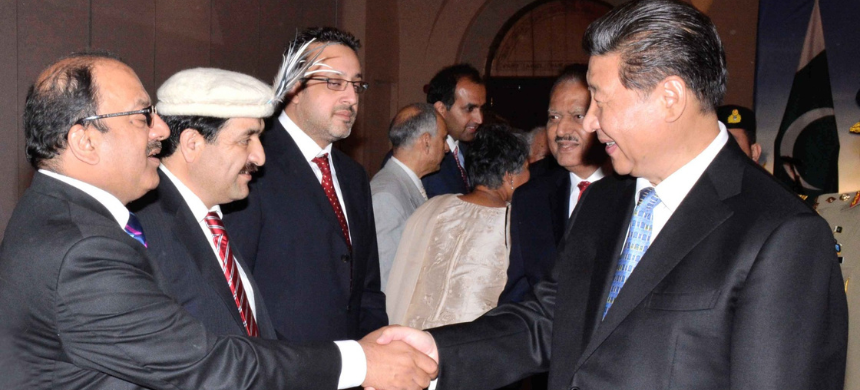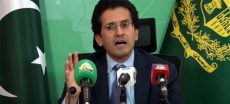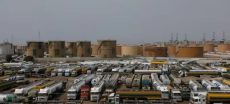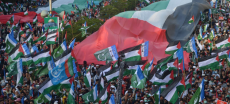Xi has created an opportunity for Pakistan—positioned at the East-West crossroads—to lead and connect globally. But doing so requires national reform, political unity, and economic clarity.
By Syed Ali Nawaz Gillani
Ten years ago, in April 2015, a red carpet was rolled out in Islamabad. President Xi Jinping stepped onto Pakistani soil. It was not just a state visit. It was the start of something much bigger. Now that April 2025 marks the tenth anniversary of this historic moment, it is being celebrated in both countries.
But it’s not just about looking back. It’s a reminder of how far Pakistan have come — and where Pakistan needs to go next.
During the President Xi’s trip to Pakistan China-Pakistan Economic Corridor (CPEC) was officially announced. It was a 46-billion-dollar initiative to build roads, railroads, ports and energy facilities. It transformed the landscape of the area — and collaboration among the nations.
Now, a decade later, the CPEC is commencing its second phase. Attention is being redirected towards emerging sectors like technology, agriculture, and the digital economy—fields that are vital for the future.
Simultaneously, Xi’s worldwide perspective — ranging from the expansion of BRICS to mediating peace among regional adversaries — is currently influencing a dynamic global landscape.
In 2015, Pakistan was searching for direction. China extended its hand. That handshake was more than ceremonial—it was economic, strategic, and symbolic.
Under CPEC Phase One, Pakistan saw heavy investment in energy, infrastructure, and security. Load-shedding eased. Highways cut through barren lands. Gwadar, once a forgotten outpost, became a strategic node on the global map. But that was just the foundation.
Today, CPEC 2.0 focuses on the frontiers—technology, agriculture, logistics, and the digital economy. Special Economic Zones are rising. Chinese tech giants see potential in Pakistan’s youth-driven market. AI labs, fintech platforms, and logistics hubs are replacing smokestacks. The Belt and Road is no longer just about bricks—it’s about bytes.
Pakistan stands at a critical juncture. Will it rise to the challenge? Or will political discord drown out economic momentum?
CPEC’s second phase demands more than infrastructure. It demands vision, policy coherence, and execution. China is providing the tools. Pakistan must now build with precision.
President Xi is not only investing in bilateral ties. He’s expanding China’s global footprint. His approach is patient, deliberate, strategic. The Belt and Road Initiative now stretches from African highways to Central Asian gas lines. It connects the scattered dots others failed to.
Under Xi’s leadership, BRICS has transformed. No longer just a club—it has become a challenge to Western-led institutions. His diplomacy is subtle, but effective. His mediation between Iran and Saudi Arabia stunned the world. A quiet meeting in Beijing dissolved decades of hostility. No threats. No troops. Just talks.
China didn’t drop bombs. It dropped dialogue.
In a world where power often arrives with noise—jets, sanctions, threats—Xi has flipped the script. His method: trade, tech, tunnels. His influence: energy, investment, diplomacy.
In Africa, China builds roads where others make promises. In Latin America, it invests where others advise. In Asia, it calms where others confront.
Pakistan is central to this new world design. Geographically and politically, it is a key corridor to energy markets, the Middle East, and the Indian Ocean. Gwadar is not just a port—it’s a pivot. CPEC is not just a road—it’s a route to relevance.
China’s mediation between Saudi Arabia and Iran was no fluke. It was a sign of changing global equations. The handshake happened in Beijing, not in Riyadh or Tehran, sent a clear message: China is become a trusted voice in the region.
Years of discreet talks and strategic investment laid the groundwork. Now, China speaks the language of peace where others speak of pressure.
For Pakistan, this shift matters. A stable Gulf means secure borders, increased trade, and renewed economic opportunity. Iranian and Saudi cooperation could unlock transit routes, energy projects, and new markets for Pakistani exports.
And this turn of fortune—this wider stability—traces back to the man who stood in Islamabad ten years ago.
As Islamabad lights up for this ten-year milestone, pride fills the air—but so should urgency. Pakistan cannot afford to let CPEC stall. Power plants and roads are no longer enough. The next generation wants jobs, education, innovation.
CPEC 2.0 must evolve. It must move into universities, startups, digital services. It must uplift small businesses, not just multinationals. China is ready. Is Pakistan?
Celebration must not blur the larger question: Where do we go from here?
President Xi’s influence has expanded beyond geography. BRICS now includes more economies. The BRI no longer only builds roads—it fosters digital networks, soft power, and green energy. Xi has written a new manual for global leadership—one grounded in shared growth.
And the Global South is watching. Tired of Western lectures. Frustrated with slow aid. Hungry for fair deals. Xi’s model offers an alternative: investment without interference, development without dependency.
Pakistan is the most important test case of this model. At the crossroads of East and West, Pakistan is more than a passageway. It is a potential regional anchor. To the north—China. To the west—Iran and Central Asia. To the south—the Arabian Sea. To the east—India and beyond.

This is Pakistan’s opportunity. To lead as a connector of regions. To link trade, transport, and tech. To leap—not in decades, but in years. But success depends on reform.
Political unity is essential. National projects cannot change direction with every government. Pakistan must speak with one voice on the economy.
Policy continuity builds confidence. Investors need predictability. CPEC projects must survive elections, transitions, and turbulence.
Transparency is vital. People deserve to see where the money goes, who benefits, and what outcomes are expected. Accountability drives trust. And trust drives development.
Xi has drawn the blueprint for a new global order—cooperation over confrontation, dialogue over dominance, infrastructure over ideology.
Pakistan has a front-row seat. But also a role to play. And if it plays that role with consistency, clarity, and courage, it won’t just be a participant. It will be a leader.
CPEC is not charity. It is a partnership. And partnerships thrive on trust.

The West may watch China with unease. But the facts remain: China is rising—not by force, but by focus. Xi is not reacting to the world—he is reshaping it. Where others talk of decoupling, China speaks of development. The contrast is stark.
President Xi’s 2015 visit wasn’t just symbolic. It was strategic. It set a tone for global relations that continues to resonate today.
As Pakistan looks ahead, CPEC 2.0 and China’s broader vision will test its commitment. This phase must be smarter, greener, more inclusive. It must serve people, not just power grids.
Xi’s visit gave Pakistan a gift. A decade later, it’s time to return it—with reform, results, and responsibility.
Ten years. One visit. A thousand milestones.
Xi came with a handshake. What followed was a roadmap to prosperity and peace. The red carpet may be gone, but the road it led to? It still stretches forward.











